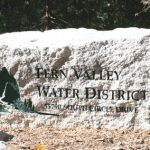Editor:
The Idyllwild Water District began having public meetings about the current rate changes last year on Dec. 6. There have been no fewer than eight meetings and workshops that IWD implored the public to attend.
The Town Crier has published several articles encouraging the public to attend during that time. Each and every meeting was noticed to the public.
At IWD, open dialogue is welcomed as evidenced by the last two-hour meeting. The meeting before that was a three-hour discussion. The rate plan and other subjects were discussed at length. The proposed changes have been posted, advertised and mailed to all IWD members. The changes are on the website, with a rate calculator that compares your current bill to the new rates.
To say that IWD has not tried to include the public is either illiteracy or feigned ignorance.
Many have found that initially, their water bill is actually lower under the new rate plan during the first year and then goes up over the next four years. Large users (gardeners and summer landscapers) see smaller proportionate increases.
The bigger question is why change the rates at all? First of all, Idyllwild shouldn’t end up with brown water like Compton or the fourth worst water in the nation like Riverside. Neglect of their infrastructure has resulted in terrible water with inadequate funds to fix it. Pipes rarely burst at the right time. (LA burst floods UCLA.)
The second reason is that IWD must be compliant with new state law. IWD did the research and this is the safest, most reasonable solution that a team of experts has determined will work for our community. “A stitch in time saves nine” echoes in the mind.
Everyone who attended the meetings understands the implications. IWD has a 10-year plan that replaces old pipes and maintains sufficient reserves for emergencies, all approved at the meetings referenced.
It is difficult to increase rates over the next five years, but it is necessary to ensure safe water and the stability of IWD.
The IWD mission is to provide reliable water and sewer service in a safe, cost-effective and environmentally sound manner in accordance with the community needs. This is the best way to achieve that mission at this time.
This is my opinion and has not been approved by the full IWD board.
Charles Schelly, AA, BS, DC, NRCME
IWD President










